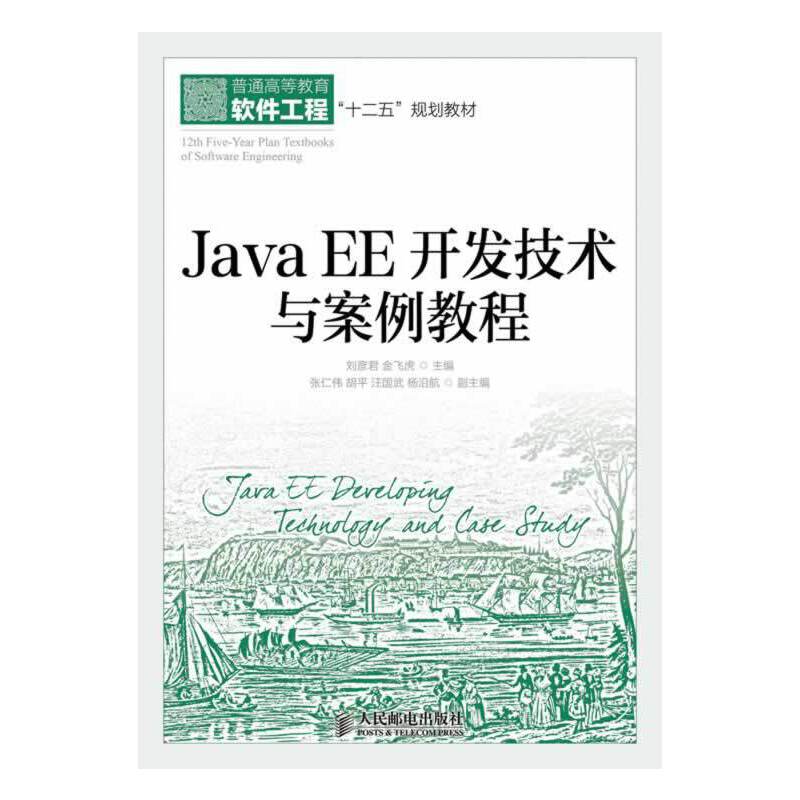地下水流数值模拟-有限差分法 / 普通高等教育“十二五”规划双语系列教材
¥29.00定价
作者: 郑秀清 陈军锋 刘萍
出版时间:2014-02
出版社:中国水利水电出版社
- 中国水利水电出版社
- 9787517017844
- 1版
- 130867
- 47154597-0
- 16开
- 2014-02
- 132
- 工学
- 水利工程
- TV 水利工程
- 水利工程
- 本科
作者简介
内容简介
本教材是国内地下水流数值模拟的一本双语教材,包括基本理论、Visual MODFLOW 软件使用介绍和实践应用三部分,知识点系统而全面。第一部分是地下水流数值模拟的基础理论部分,介绍了有关基本概念、基本定律、基本微分方程、数学模型的建立和有限差分方法等。第二部分介绍了Visual MODFLOW 软件使用步骤,包括水流模型的输入、运行和输出。第三部分为基于Visual MODFLOW软件的地下水流数值模拟应用实例部分,包括地下水库截渗墙建设的数值模拟和水源地保护区划分的数值模拟。
目录
ABSTRACT
前言
PREFACE
Chapter 1 Introduction
1.1 Brief of Groundwater
1.1.1 Importance of Groundwater
1.1.2 Groundwater Resources Management
1.2 Process of Groundwater Modeling
Chapter 2 Mathematical Model of Groundwater Flow
2.1 Basic Concepts
2.2 Basic Law
2.2.1 Law of Energy Conservation
2.2.2 Law of Mass Conservation
2.3 Basic Equation of Groundwater Flow
2.3.1 Basic Equation for Steady Incompressible Flow
2.3.2 Basic Equation for Non-steady Compressible Flow
2.4 Boundary Conditions
2.4.1 Boundary Conditions
2.4.2 Initial Conditions
2.5 Mathematical Model
Chapter 3 Numerical Method—Finite - Difference Method
3.1 Main Ideas and Solving Steps
3.1.1 Main Ideas of Finite - Difference Method
3.1.2 Steps of Solving Groundwater Flow Problem by Difference Method
3.2 Finite Difference Formulae
3.2.1 Finite Difference Approximation
3.2.2 Convergence and Stability
3.3 Steady Flow in Confined Aquifers
3.3.1 1-D Steady Flow
3.3.2 2-D Steady Flow
3.4 Transient Flow in Confined Aquifers
3.4.1 1-D Transient Flow
3.4.2 2-D Transient Flow
3.5 Transient Flow in Unconfined Aquifers
Chapter 4 Introduction and Tutorial of Visual MODFLOW
4.1 Introduction of Visual MODFLOW
4.1.1 Brief Introduction of Visual MODFLOW
4.1.2 About the Interface
4.1.3 Main Menu Screen
4.1.4 Screen Layout
4.2 Instructions of Example Model
4.3 Creating and Defining a Flow Model
4.3.1 Generating a New Model
4.3.2 Refining the Model Grid """
4.3.3 Adding Wells
4.3.4 Assigning Model Properties
4.3.5 Assigning Model Boundary Condition
4.3.6 Assigning Particles
4.4 Running Visual MODFLOW
4.4.1 Run Options for Flow Simulations
4.4.2 Engines to Run
4.5 Output Visualization
4.5.1 Head and Contouring Options
4.5.2 Velocity Vectors and Contouring Options
4.5.3 Pathlines and Pathline Options
Chapter 5 Numerical Simulation of Impervious Wall Construction of Xizhang Basin Groundwater Reservoir in Taiyuan
5.1 Model Objectives
5.2 Overviews of the Xizhang Basin
5.2.1 Regional Geography
5.2.2 Regional Geological and Hydrogeological Conditions
5.2.3 Social and Economic Situation
5.3 Conditions for the Construction of Underground Reservoir
5.4 Groundwater Flow Model for Xizhang Basin
5.4.1 Hydrogeological Conceptual Model
5.4.2 Establishment Groundwater Model
5.4.3 Identification and Calibration of the Model
5.5 Influences of Impervious Wall on Groundwater Flow
5.5.1 Input Data for Wall Boundary
5.5.2 Simulation Impervious Wall by Wall Boundary
5.5.3 Correction of Impervious Wall Parameters
5.5.4 Effects of Impervious Wall Construction on the Simulation of Groundwater Flow
Chapter 6 Application of MODPATH to Classify Protection Area in Tumen
6.1 Model Objectives
6.2 Overviews of Water Source Situation in Tumen
6.2.1 Geography
6.2.2 Regional Geological and Hydrogeological Conditions
6.3 Groundwater Flow Model for Tumen Water Source Area
6.3.1 Hydrogeological Conceptual Model
6.3.2 Mathematical Model for the Groundwater Flow
6.3.3 Model Validation
6.4 Delineation of Water Source Protection Zones by MODPATH
6.4.1 Numerical Simulation Method
6.4.2 Procedure of Protection Zones Delineation
6.4.3 Results of Protection Zones Delineation
References
前言
PREFACE
Chapter 1 Introduction
1.1 Brief of Groundwater
1.1.1 Importance of Groundwater
1.1.2 Groundwater Resources Management
1.2 Process of Groundwater Modeling
Chapter 2 Mathematical Model of Groundwater Flow
2.1 Basic Concepts
2.2 Basic Law
2.2.1 Law of Energy Conservation
2.2.2 Law of Mass Conservation
2.3 Basic Equation of Groundwater Flow
2.3.1 Basic Equation for Steady Incompressible Flow
2.3.2 Basic Equation for Non-steady Compressible Flow
2.4 Boundary Conditions
2.4.1 Boundary Conditions
2.4.2 Initial Conditions
2.5 Mathematical Model
Chapter 3 Numerical Method—Finite - Difference Method
3.1 Main Ideas and Solving Steps
3.1.1 Main Ideas of Finite - Difference Method
3.1.2 Steps of Solving Groundwater Flow Problem by Difference Method
3.2 Finite Difference Formulae
3.2.1 Finite Difference Approximation
3.2.2 Convergence and Stability
3.3 Steady Flow in Confined Aquifers
3.3.1 1-D Steady Flow
3.3.2 2-D Steady Flow
3.4 Transient Flow in Confined Aquifers
3.4.1 1-D Transient Flow
3.4.2 2-D Transient Flow
3.5 Transient Flow in Unconfined Aquifers
Chapter 4 Introduction and Tutorial of Visual MODFLOW
4.1 Introduction of Visual MODFLOW
4.1.1 Brief Introduction of Visual MODFLOW
4.1.2 About the Interface
4.1.3 Main Menu Screen
4.1.4 Screen Layout
4.2 Instructions of Example Model
4.3 Creating and Defining a Flow Model
4.3.1 Generating a New Model
4.3.2 Refining the Model Grid """
4.3.3 Adding Wells
4.3.4 Assigning Model Properties
4.3.5 Assigning Model Boundary Condition
4.3.6 Assigning Particles
4.4 Running Visual MODFLOW
4.4.1 Run Options for Flow Simulations
4.4.2 Engines to Run
4.5 Output Visualization
4.5.1 Head and Contouring Options
4.5.2 Velocity Vectors and Contouring Options
4.5.3 Pathlines and Pathline Options
Chapter 5 Numerical Simulation of Impervious Wall Construction of Xizhang Basin Groundwater Reservoir in Taiyuan
5.1 Model Objectives
5.2 Overviews of the Xizhang Basin
5.2.1 Regional Geography
5.2.2 Regional Geological and Hydrogeological Conditions
5.2.3 Social and Economic Situation
5.3 Conditions for the Construction of Underground Reservoir
5.4 Groundwater Flow Model for Xizhang Basin
5.4.1 Hydrogeological Conceptual Model
5.4.2 Establishment Groundwater Model
5.4.3 Identification and Calibration of the Model
5.5 Influences of Impervious Wall on Groundwater Flow
5.5.1 Input Data for Wall Boundary
5.5.2 Simulation Impervious Wall by Wall Boundary
5.5.3 Correction of Impervious Wall Parameters
5.5.4 Effects of Impervious Wall Construction on the Simulation of Groundwater Flow
Chapter 6 Application of MODPATH to Classify Protection Area in Tumen
6.1 Model Objectives
6.2 Overviews of Water Source Situation in Tumen
6.2.1 Geography
6.2.2 Regional Geological and Hydrogeological Conditions
6.3 Groundwater Flow Model for Tumen Water Source Area
6.3.1 Hydrogeological Conceptual Model
6.3.2 Mathematical Model for the Groundwater Flow
6.3.3 Model Validation
6.4 Delineation of Water Source Protection Zones by MODPATH
6.4.1 Numerical Simulation Method
6.4.2 Procedure of Protection Zones Delineation
6.4.3 Results of Protection Zones Delineation
References





